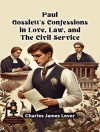In-depth scholarship on the central artists, movements, and themes of Latin American art, from the Mexican revolution to the present
A Companion to Modern and Contemporary Latin American and Latinx Art consists of over 30 never-before-published essays on the crucial historical and theoretical issues that have framed our understanding of art in Latin America. This book has a uniquely inclusive focus that includes both Spanish-speaking Caribbean and contemporary Latinx art in the United States. Influential critics of the 20th century are also covered, with an emphasis on their effect on the development of artistic movements.
By providing in-depth explorations of central artists and issues, alongside cross-references to illustrations in major textbooks, this volume provides an excellent complement to wider surveys of Latin American and Latinx art. Readers will engage with the latest scholarship on each of five distinct historical periods, plus broader theoretical and historical trends that continue to influence how we understand Latinx, Indigenous, and Latin American art today. The book’s areas of focus include:
- The development of avant-garde art in the urban centers of Latin America from 1910-1945
- The rise of abstraction during the Cold War and the internationalization of Latin American art from 1945-1959
- The influence of the political upheavals of the 1960s on art and art theory in Latin America
- The rise of conceptual art as a response to dictatorship and social violence in the 1970s and 1980s
- The contemporary era of neoliberalism and globalization in Latin American and Latino Art, 1990-2010
With its comprehensive approach and informative structure, A Companion to Modern and Contemporary Latin American and Latinx Art is an excellent resource for advanced students in Latin American culture and art. It is also a valuable reference for aspiring scholars in the field.
Содержание
List of Illustrations
About the Editor
Notes on Contributors
Series Editor’s Preface
Introduction: Latin American and Latino Art
Alejandro Anreus, Robin Greeley, Megan Sullivan
Section I 1910-1945: Cosmopolitanisms and Nationalisms
This section focuses on the origins and development of avant-garde art movements based in the major urban centers of Latin America. It addresses the rising tensions between social and aesthetic agendas (especially around issues of race and class), redefinitions of national identities, and the confrontation between cosmopolitanism and nationalism. This set of essays explores various movements and critical voices in relation to relevant aspects of the international avant-garde and key moments of social and political history.
Chapter 1 Art After the Mexican Revolution: Muralism, Prints, Photography
Leonard Folgarait
Chapter 2 The Reinvention of the ‘Semana de Arte Moderna’
Francisco Alambert
Chapter 3 José Carlos Mariátegui and the Eternal Dawn of Revolution
Martín Oyata
Chapter 4 National Values: The Havana Vanguard in the Revista de Avance and the Lyceum Gallery
Ingrid W. Elliott
Chapter 5 Photography, Avant-Garde, and Modernity
Esther Gabara
Section II 1945-1959: The Cold War and Internationalism
This group of essays addresses the rise of abstraction and consolidation of “internationalist” formalism, the polemics between the proponents of social realism and indigenismo as “authentic” art forms versus the subsequent development of alternative movements such as geometric, concrete and gestural abstraction. This section examines these movements within the social and political context of the Cold War and the rise of modernization theory and state-led developmentalism across Latin America. It also highlights the importance of the rise of institutions, museums, and events, such as the São Paulo Biennial, in the growing internationalization of Latin American art.
Chapter 6 Wifredo Lam, Aimé Césaire, Eugenio Granell, André Breton: Agents of Surrealism in the Caribbean
Lowery Stokes Sims
Chapter 7 The Oscillation between myth and critique: Octavio Paz between Duchamp and Tamayo
Cuauhtémoc Medina
Chapter 8 Latin American Abstraction (1934–1969)
Juan Ledezma
Chapter 9 Architectural Modernism and Its Discontents: Brazil and Beyond
Fabiola López-Durán
Chapter 10 The Realism-Abstraction Debate in Latin America: Four Questions
Megan Sullivan
Chapter 11 São Paulo, and other Models: The Biennial in Latin America, 1951–1991
Isobel Whitelegg
Section III 1959-1973: Revolution, Resistance, and the Politicization of Art
This section explores the upheavals in art and politics in the decade of the 1960s. Significant changes in the visual arts (the dematerialization of the art object, the rise of happenings, and the politicization of art) are read against the political and social turmoil of the Cuban Revolution, the 1968 student protests, and polarization of the political spectrum across Latin America. Several key theorists of this intense period of artistic and political development (Marta Traba, José Gómez Sicre, and Oscar Masotta) are particularly highlighted.
Chapter 12 Art and the Cuban Revolution
Alejandro Anreus
Chapter 13 The Myths of Hélio Oiticica
Irene V. Small
Chapter 14 Between Chaos and the Furnaces: Argentine Conceptualism
Daniel Quiles
Chapter 15 Chicana/o Art: 1965 – 1975
Terezita Romo
Chapter 16 Cold War Intellectual Networks: Marta Traba in Circulation
Florencia Bazzano
Chapter 17 José Gómez Sicre and the Inter-American Exhibitions of the Pan American Union
Claire F. Fox
Chapter 18 “…A place for us”: The Puerto Rican Alternative Art Space Movement in New York
Yasmin Ramirez
Section IV 1973-1990: Dictatorship, Social Violence, and the Rise of Conceptual Strategies
This section examines the rise of conceptual aesthetic strategies and new media in the 1970s and 80s in relation both to the repressive dictatorships and the retreat of democracy throughout the region and international trends. In addition to examining new artistic collectives and movements, this section explores several key art critics crucial to theorizing these experimental aesthetic strategies, including Juan Acha, Nelly Richard, and Willy Thayer.
Chapter 19 An ‘Other’ Possible Revolution. The Cultural Guerrilla in Peru in 1970
Emilio Tarazona and Miguel A. López
Chapter 20 Art in Chile after 1973
Miguel Valderrama
Chapter 21 Cold War Conceptualism: Mexico’s Grupos Movement
Robin Greeley
Chapter 22 Asco in Three Acts
Robb Hernández
Chapter 23 A Real Existence: Conceptual Art, Conceptualism and Art in Brazil and Beyond
Sérgio B. Martins
Section V 1990-2010: Neoliberalism and Globalization
This group of essays explores recent production in Latin American and Latino art. It focuses on the rise of identity politics, the repercussions of globalization on Latin American and Latino art, and the burgeoning art market (dealers, auctions, collectors) and exhibitions under the economic effects of neoliberalism.
Chapter 24 Border Art
Ila N. Sheren
Chapter 25 Walking with the Devil: Art, Culture, and Internationalization. An Interview with Gerardo Mosquera
Alejandro Anreus
Chapter 26 Is This What Democracy Looks Like? Tania Bruguera and the Politics of Performance
Stephanie Schwartz
Chapter 27 Shadows of the Doubtful Straight: Cuban-American Artists, 1970-2000
Rocío Aranda-Alvarado
Chapter 28 Notes on the Dominican Diaspora in the United States
E. Carmen Ramos
Chapter 29 Antigonismos: Metaphoric Burial as Political Intervention in Contemporary Colombian Art
Ana María Reyes
Chapter 30 Art, Memory, and Human Rights in Argentina
Andrea Giunta
Section VI Approaches, Debates, and Methodologies
This group of essays addresses broader theoretical and historical trends, as well as key methodological approaches that have shaped the field. Essays explore the development of institutions, categories, models, and discourses that have shaped our conceptions of modern and contemporary Latin American and Latino art in the western hemisphere.
Chapter 31 Time and Place: Notes on the System of the Arts in Latin America
Natalia Majluf
Chapter 32 Is There Such a Thing as Latino Art?
Chon A. Noriega
Chapter 33 The Expansion of Culture: Drawbacks for Cities and Art.
Néstor García Canclini
Chapter 34 A Question: The Term “Indigenous Art”
Ticio Escobar
Chapter 35 What is ‘Latin American Art’ today?
José Luis Falconi
Об авторе
Alejandro Anreus, Ph D, is Professor of Art History and Latin American Latina/o Studies at William Paterson University, New Jersey, USA.
Robin Adèle Greeley, Ph D, is Associate Professor of Art History at the University of Connecticut, Connecticut, USA.
Megan A. Sullivan, Ph D, is Assistant Professor of Art History at the University of Chicago, Illinois, USA.












